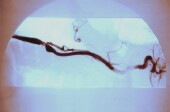Later Use of Clot-Buster After Stroke Possible: Study
tPA can be safely given beyond the current 3-hour limit, international researchers find.
By Ed Edelson
HealthDay Reporter
|
E-mail this article
Subscribe to news
Printer friendly version
|

(SOURCES: Nils Walhgren, M.D., professor, neurology, Karolinska Institute, Stockholm, Sweden; Larry Goldstein, M.D., professor of neurology, Duke University, Durham, N.C.; Sept. 14, 2008, The Lancet online)
SUNDAY, Sept. 14 (HealthDay News) -- European researchers who showed that the clot-dissolving drug tPA could safely be used within three hours after a stroke now say the limit can be extended to four-and-a-half hours.
"We now have a three-hour limit mandated by authorities," said Dr. Nils Wahlgren, a neurology professor at the Karolinska Institute in Sweden and leader of an international group reporting Sunday in the online version of The Lancet. "Our data indicate that it is safe to extend that from three hours to four-and-a-half hours. The risk of hemorrhagic complications is not significantly different from the earlier time limit."
Tissue plasminogen activator (tPA), also known as the drug alteplase, is the approved treatment for the most common kind of stroke, in which a blood clot blocks a brain artery. The three-hour post-stroke time limit has been set because of fears that use of the clot-dissolving drug beyond that period might cause dangerous bleeding or other complications.
The new report is the latest from a study requested by European authorities after doubts arose about the safety of tPA in stroke treatment, which was approved in 1996 by the U.S. Food and Drug Administration. It was approved in 2002 in Europe.
The study compared the outcomes of 664 people who were given tPA between three and four-and-a-half hours after a stroke against almost 12,000 who received the drug within three hours of an attack.
The study found a death rate of 12.7 percent in the following three months for the three-hour group and 12.2 percent for those getting tPA later. In the early group, 58 percent achieved the ability of independent action, compared to 56.3 percent in the later-administration group.
"We recorded no significant differences between the 3- to 4.5-hour cohort and the within 3-hour cohort for any outcome measure," the researchers reported.
The bottom line, according to Wahlgren: "if patient treatment has been delayed, it is still safe to treat a patient beyond the time limit of three hours."
The results were expected to be presented at an international meeting in Stockholm in November, "when we will recommend a change in the guidelines," Wahlgren said. "I expect it would be accepted by the international community, both in the United States and Europe, and in the rest of the world."
But the new results do not necessarily mean an end to the three-hour limit, cautioned Dr. Larry Goldstein, professor of neurology at Duke University and director of the Duke Stroke Center in Durham, N.C.
"They are consistent with a combined analysis done some time ago that suggested we might be able to treat beyond three hours," Goldstein said. "But those were observational studies, as was this one. Controlled trials done to test that belief have not shown benefit."
It will take a change in the current guidelines to alter the three-hour limit, he said, and the overall benefit of tPA is greater when it is given earlier. "The sooner you get blood to the brain, the better," Goldstein said.
More information
There's more on tPA at the American Heart Association. 
Copyright © 2008 ScoutNews, LLC. All rights reserved. 
HealthDayNews articles are derived from various sources and do not reflect federal policy. healthfinder.gov does not endorse opinions, products, or services that may appear in news stories. For more information on health topics in the news, visit the healthfinder.gov health library.